How To Heal Bone Fractures Faster: 9 Effective Home Remedies
Broken bones take a while to mend, but here's what you can do in the meantime.

Image: Midjourney/ StyleCraze Design Team
If you are wondering how to heal a broken bone faster, you have landed on the right page! One of the most prevalent orthopedic disorders is fractures or shattered bones, so it is no wonder there is a need to find ways to heal bone fractures faster. Every year, over 6.3 million fractures occur in the United States alone (11). It doesn’t stop there! One in every three women and one in every five men in the world will have osteoporosisi A bone condition that causes weak bones due to a decrease in the body’s ability to replace old bone tissues with new ones. at some point in their lives (2). Although fractures heal on their own, you may employ a few home cures and techniques to speed up the healing process and lessen the possibilities of future fractures. Scroll down to learn how to deal with this situation.

In This Article
What Is A Bone Fracture?
A bone fracture is nothing but a crack in the bone.
A great percentage of fractures are a result of stress or high force impact. In some individuals, a bone fracture can also be a result of medical conditions that weaken the bone like osteoporosis, cancer, and osteogenesis imperfecta (brittle bone disease) (3).
Your bone can be fractured in various ways. If a break in the bone does not affect the surrounding tissue or damage it in any way, it is called a closed fracture. A bone fracture that damages the surrounding skin is called an open fracture or a compound fracture (4).
So, how many types of fractures are there? And how are they different from each other? Let’s find out!
Key Takeaways
- Bone fractures are a common issue once you start aging.
- Besides getting medical help, you can also incorporate home remedies that include consuming calcium-rich foods and nuts to fasten the healing process.
- Always ensure you get enough sunlight to improve your bone strength and speed up healing.
- You can also do mild physical activities and exercises to improve bone growth and healing.
Types Of Bone Fractures
- Avulsion fracture – A fracture caused by a muscle or ligament pulling on your bone.
- Comminuted fracture – This results in shattered bones.
- Compression or crush fracture – This type usually occurs in the bones of your spine, like the front of your vertebra.
- Fracture dislocation – Dislocation of a joint and fracture in one of the bones.
- Greenstick fracture – A fracture on one side of the bone that does not cause it to break completely.
- Hairline fracture – A partial fracture.
- Impacted fracture – Occurs when one fragment of your bone enters the other as a result of a fracture.
- Intraarticular fracture – When a fracture or break extends into the joint surface.
- Longitudinal fracture – A longitudinal break along the bone.
- Oblique fracture – A fracture diagonal to the bone’s long axis.
- Pathological fracture – A medical issue causes your bones to weaken, making them fracture easily.
- Spiral fracture – A fracture accompanied by a twisted bone.
- Stress fracture – When a bone breaks due to repeated stress and strain.
- Torus or buckle fracture – Deforms your bone without cracking.
- Transverse fracture – A straight break across your bone.
Bone fractures also exhibit a few symptoms depending on the affected bone. The most affected bones are the orbital bone (eye socket), tailbone, pelvic bone, the clavicle or collarbone, the fibula or calf bone, heel bone, and the femur. Let us now look at the symptoms of bone fractures.
Signs And Symptoms Of Fractures
A few common symptoms associated with fractures are (5), (6):
- Swelling
- Bruising
- Pain
- Skin discoloration
- Angulation (bending of the affected area in an unusual angle)
- Inability of the patient to put weight on the affected area
- Immobility
- A grating sensation in the affected area
- Bleeding (in the case of an open fracture)
Usually, an external force or stress causes a fracture. Let’s take a quick look at the other causes.
 Trivia
TriviaWhat Causes A Fracture?
Fractures are caused due to a bad fall or an automobile accident.
Most healthy bones are tough enough to withstand powerful impact. Aging and other health conditions can weaken your bones, making the probability of fractures higher.
A few underlying medical conditions that can cause your bones to get fractured easily are (3):
- Osteoporosis
- Infection
- Tumor or cancer
You may also be at an increased risk of getting fractures due to the following factors:
- Age: Older adults and young children are more prone to fractures because of weak bones.
- Repeatedly injuring the affected area (common among sports professionals)
- Menopause (7).
After an accident or injury, if you suspect you have fractured your bone, get yourself diagnosed by a medical professional.
 Quick Tip
Quick TipHow To Diagnose A Bone Fracture
The doctor will first ask you to undergo a physical examination if they suspect a fracture.
You may further be asked to undergo any of the following tests:
- X-ray
- MRI scan
- CT scan
These tests can help you identify the fracture and start the required treatment. Do note that the healing process can take time, and understanding it can keep you prepared. Learn more in the next section.
Three Stages Of Bone Healing
Before we tell you how to heal a broken bone faster, let us quickly look at the three stages of bone healing.
- The Inflammatory Stage
The bone is broken, which triggers an inflammatory response. This causes the injured area to become red, swollen, and painful.
- The Reparative Stage
A soft bone (called callus) replaces the initial blood clot and provides some support. The callus gradually hardens over the next few weeks.
- The Remodeling Stage
This phase starts around 6 weeks post-injury, where the regular bone gradually replaces the hard callus. The bone reshapes itself over the following months and eventually returns to its pre-injury state.
A fractured bone usually takes 6 to 8 weeks to heal, but warrants immediate medical treatment. Along with that, you also can try the following remedies to possibly accelerate recovery.
Home Remedies To Treat A Broken Bone
- Turmeric
- Essential Oils
- Castor Oil
- Black Caraway Seed Or Kalonji Oil
- Sesame Seeds
- Boron
- Coconut Oil
- Epsom Salt
- Aloe Vera Juice
How To Treat A Fracture Naturally
If you are wondering how to heal a broken bone faster and naturally, your wait ends here. This section will take you through some of the best home remedies you can use to treat your fracture quickly, offering hope for a faster recovery.
Note: The home remedies discussed below may offer some relief from pain and inflammation. However, they should never replace professional treatment. A broken bone requires proper medical care, such as using a splint, brace, or cast, physical therapy, or even surgery in some cases. It is best to use these remedies only to complement your medical treatment on a doctor’s advice, ensuring you receive the best care for your condition.
1. Turmeric

You Will Need
- 1 teaspoon of turmeric powder
- 1 glass of slightly hot milk
What You Have To Do
- Add a teaspoon of turmeric powder to a glass of slightly hot milk.
- Mix well and drink it immediately.
How Often You Should Do This
Drink this mixture once every night.
Why This Works
The presence of curcumin in turmeric makes it apt for healing fractures faster.
Curcumin acts as an immunomodulatori A substance that promotes the functioning of the immune system and aids in responding to a disease or infection. and exhibits anti-inflammatory activities that can help regulate your immune responses and inflammation (8). This may help reduce swelling and pain around the fracture site.
2. Essential Oils
a. Elemi Oil
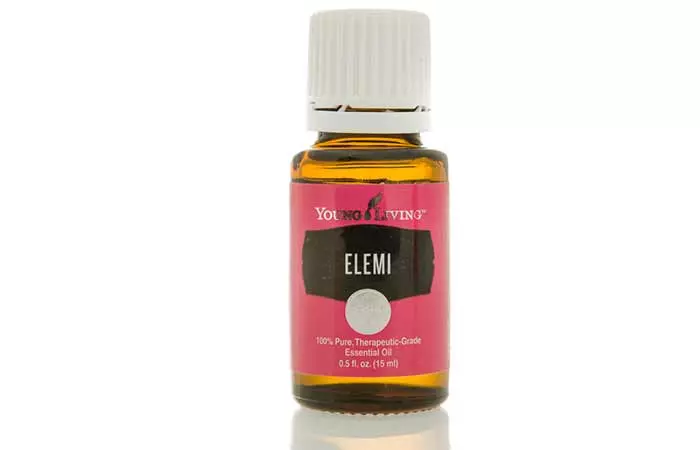
You Will Need
- 3-4 drops of elemi oil
- 2 teaspoons of coconut oil
What You Have To Do
- Add three to four drops of elemi oil to two teaspoons of coconut oil.
- Mix well and apply it to the fractured area.
How Often You Should Do This
You must do this 5 to 6 times daily.
Why This Works
Elemi oil contains limonene, which has analgesic and anti-inflammatory properties (9), (10). Due to this, it may help reduce swelling and pain around the fracture site. This aids faster healing of the fracture, especially once the cast is removed. However, it is important to note that this claim is anecdotal, and individual experiences with the oil may vary. While some people may find relief from discomfort, there is limited scientific research to fully support its effectiveness in fracture healing.
b. Lavender Oil

You Will Need
- 3-4 drops of lavender oil
- 2 teaspoons of coconut oil (or any other carrier oil)
What You Have To Do
- Add three to four drops of lavender oil to two teaspoons of coconut oil.
- Mix well and apply the blend to the affected area.
- Allow it to dry naturally.
How Often You Should Do This
Do this several times daily for effective results.
Why This Works
Lavender oil offers multiple benefits when it comes to healing a fracture. It can help in reducing inflammation and pain in the fractured area with its anti-inflammatory action (11).
3. Castor Oil

You Will Need
- Cold pressed castor oil (as required)
- A clean washcloth
What You Have To Do
- Soak a clean washcloth in cold pressed castor oil.
- Wring out the excess oil and wrap the soaked washcloth around the affected area.
- Leave it on for a night or two.
- If you have a cast, wait until it is removed.
How Often You Should Do This
Do this daily.
Why This Works
One of the main active compounds present in castor oil is ricinoleic acid. This compound exhibits anti-inflammatory activities that help in soothing the inflammation and pain associated with a fracture (12).
4. Black Caraway Seed Or Kalonji Oil

You Will Need
1 tablespoon of black caraway seed (kalonji) oil
What You Have To Do
- Take a tablespoon of black caraway seed oil and warm it.
- Apply the warm oil to the affected area.
- Leave it on to dry.
How Often You Should Do This
Do this 3 to 4 times daily.
Why This Works
Black caraway seed oil is used for treating a range of medical conditions. What makes it effective in treating fractures is its bone-strengthening action. Black caraway seed oil reverses osteoporosis, according to a study published in BMC Complementary and Alternative Medicine. This may be attributed to the oil’s ability to restore calcium levels, which are needed for healthy bones. It also helps reduce inflammation and protect the bones against oxidative stress due to its antioxidant properties. Similar results were observed in an animal study published in the BMC Complementary Medicine and Therapies journal. The researchers divided female rats into three groups, one of which received black caraway treatment. This group had stronger bones and improved calcium levels. The study suggests that this may be due to the presence of unsaturated fatty acids in black caraway that are known for their antioxidant and anti-inflammatory properties (13).
5. Sesame Seeds
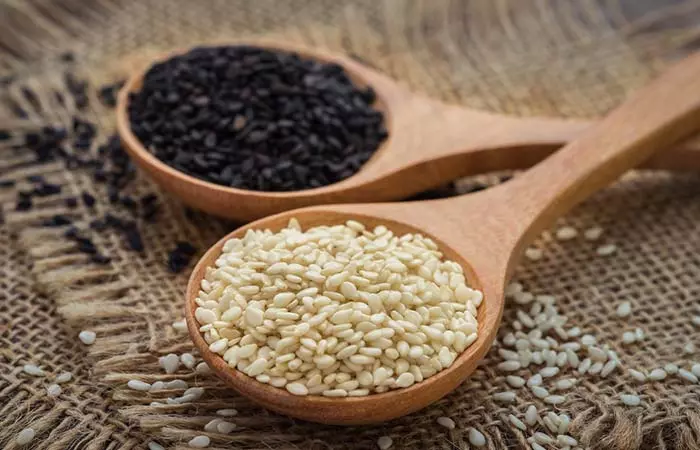
You Will Need
1-2 tablespoons of roasted sesame seeds
What You Have To Do
- Consume one to two tablespoons of roasted sesame seeds daily.
- Additionally, you can also apply sesame oil to the affected area for faster recovery.
How Often You Should Do This
You must do this at least once daily for best results.
Why This Works
Sesame seeds are rich in nutrients for bone healing like calcium and iron that help in faster recovery from a fracture (14). Calcium helps in remineralizing the bone and strengthening the fracture site, while iron supports oxygen transport in the blood, which is crucial for healing tissues and promoting new bone cell growth (15), (16). Sesame seeds also exhibit powerful antioxidant and anti-inflammatory actions that can help in dealing with the symptoms of swelling and pain associated with a fracture (14). However, sesame seed’s impact on fracture healing is not conclusively proven in clinical studies.
6. Boron
You Will Need
3-20 mg of boron
What You Have To Do
- Consume natural sources of boron through your daily diet.
- Foods rich in boron include chickpeas, almonds, beans, bananas, prunes, bananas, oranges, apples, broccoli, and legumes.
- You can also consider taking additional bone healing supplements for this nutrient after consulting a doctor.
How Often You Should Do This
You must do this on a daily basis.
Why This Works
Boron is a necessity for various bone building factors, such as calcium, magnesium, vitamin D, estrogen, etc. Post menopause, boron is also believed to stimulate hormones that help you deal with osteoporosis and debilitating fractures (17), (18).
7. Coconut Oil

You Will Need
1 tablespoon of cold pressed coconut oil
What You Have To Do
- Consume a tablespoon of cold pressed coconut oil via your daily diet.
- You can also use coconut oil topically on the affected area.
How Often You Should Do This
Consume coconut oil regularly to get the desired results.
Why This Works
Supplementing your body with coconut oil can help in strengthening your bones and prevent bone loss associated with osteoporosis. This may be because the oil is rich in antioxidants that fight free radicals to reduce oxidative stress, which is a major cause of bone loss (19). The anti-inflammatory action of coconut oil can provide relief from pain and inflammation (20).
8. Epsom Salt
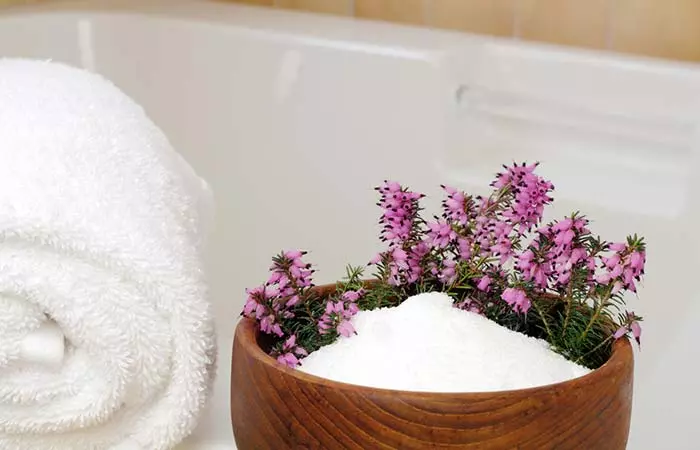
You Will Need
- 1 cup of Epsom salt
- Water
What You Have To Do
- Add a cup of Epsom salt to a bathtub.
- Fill it with lukewarm water.
- Soak in the Epsom salt bath for 20 to 30 minutes.
How Often You Should Do This
Do this once daily or every alternate day.
Why This Works
Epsom salt is also referred to as magnesium sulfate due to its composition. The presence of magnesium in Epsom salt imparts amazing anti-inflammatory properties to it that can help reduce the pain, inflammation, and swelling accompanying a fracture (21).
9. Aloe Vera Juice

You Will Need
- 1 cup of latex-free aloe vera juice
What You Have To Do
1. Consume a cup of latex-free aloe vera juice daily.
2. You can also apply aloe vera gel to the affected area for momentary relief from pain and inflammation.
How Often You Should Do This
You must drink it once daily for a few weeks.
Why This Works
Aloe vera possesses natural healing and soothing properties due to the presence of a polysaccharide called acemannan. It can also help in increasing your bone density with bone density-building activities, thus accelerating the healing of the fractured bone. In lab tests, Elemi oil has shown promising results by stimulating bone-forming cells to grow faster, produce essential bone-building proteins, and enhance mineralization. In animal studies, rats treated with acemannan after tooth extraction showed faster and stronger bone growth compared to untreated ones (22).
There are many other home remedies you can find online apart from the ones listed above. Dr. Sunayana Shivangi Pande, an author and blogger, shares her healing journey after she hurt her pinky toe. She says,“ In my journey, I refrained from walking on my fracture, resisted the urge to liberate my boot during sleep or shower, and meticulously curated my diet (i).” She opted to manage the fracture through dietary control and the use of Ayurvedic remedies to promote bone healing and alleviate potential pain. She used turmeric, Ashwagandha, Triphala, and many other Ayurvedic ingredients to help reduce inflammation and improve nutrient absorption in her journey towards transformative healing .
You can pair these home remedies for how to heal a broken bone faster with a healthy diet to promote bone healing. There are certain foods that aid bone health and may speed up its recovery process. Learn more in the next section.
Nutrition For Bone Healing
A healthy diet is essential for healing your bones. The regrowth and repair of bone tissue depend on a number of vital nutrients. Listed below are some nutrients and foods that you should add to your diet:
- Calcium is vital for bone health, as it provides the structural integrity of bone tissue. It does so by mineralizing the bones and strengthening them (15) during the bone’s healing process. Calcium is also needed for fracture-callus mineralization, the process where the tissue that forms around a broken bone hardens and turns into bone (23). Depending on your age and gender, consuming 1,000–1,200 mg of calcium daily is advised. Dairy items like milk, yogurt, and cheese, along with leafy green vegetables like broccoli, kale, and tofu are excellent sources of calcium (24).
- Vitamin D is essential for calcium absorption in the body and plays a key role in bone mineralization. The vitamin is converted into its active form, calcitriol, in the kidneys. This enhances the expression of calcium-binding proteins that help transport calcium from your food into your bloodstream, increasing the absorption rate. For most adults, a daily dose of 600-800 IU of vitamin D is advised. Eggs, fish oils, and sun exposure are sources of vitamin D (25).
- Magnesium helps maintain healthy bones by controlling calcium levels and contributing to bone growth. It also plays a role in the synthesis and activation of vitamin D, which is needed for better bone health. Depending on their age and gender, adults should aim for 310-420 mg of magnesium each day. Nuts, whole grains, and legumes are high in magnesium (26).
- Vitamin K plays a role in bone metabolism and helps in the regulation of calcium in the bones. It does so by promoting the production of osteocalcin, a protein that helps bind calcium to the bone. The recommended daily intake is around 90-120 mcg. Fermented foods such as natto and leafy greens are good sources of vitamin K (27).
Here are a few tips you can follow to prevent fractures in the future.
Prevention Tips
- Make sure to get enough calcium through your diet.
- Get enough sunlight daily as it is one of the best sources of vitamin D, which is a much-needed nutrient for strengthening your bones.
While Vitamin D may not show significant results by itself, a 2019 study showed daily supplementation of a combination of vitamin D and calcium can minimize the risk of fractures. The study was based on six randomized trials involving 49,282 participants with 730 cases of hip fractures and 5449 other incident fractures. A daily dosage of 400-800 IU of vitamin D and 1000-1200 mg of calcium resulted in a 16% reduced risk of hip fractures and a 6% reduced risk of any fractures.
- Add physical activities and exercises for bone healing, like weight-bearing exercises, resistance training, short weight lifts, skipping, walking, and running, to your daily routine.
- Don’t smoke.
- Limit your alcohol intake.
- If you have weak bones, consume bone healing foods recommended by a doctor regularly.
- Keep the affected area as immobile as you can until the fracture heals completely. The best healing process to improve pain management is rest and recovery.
- Consume vitamins and minerals for bone health improvement. You can either eat nutrient rich foods or take supplements.
- If your doctor recommends it, opt for bone healing massage therapy for minor injury rehabilitation issues. This can help prevent the injury from becoming severe.
- For minor issues, consider undertaking physical therapy for bone healing. However, ensure you have a professional therapist guiding you.
Dr. Pande adds in her blog that she limited her intake of caffeine, red meat, alcohol, salt, and sugar as they can seriously harm the bones. Instead, she opted for herbal concoctions and healthy foods that would ensure proper absorption of calcium and other vitamins.
Infographic: 5 Effective Home Remedies For Treating A Broken Bone
Factors like the nature and severity of the fracture determine the recovery process. While there are different procedures to fix a broken bone, a few simple ingredients may help in managing a fracture. Check out the infographic below to learn about the 5 effective home remedies for treating a broken bone.
Some thing wrong with infographic shortcode. please verify shortcode syntax
This is all you need to know about how to heal a broken bone faster. Bone fracture, or a crack in the bone, can result from high impact force or stress. Depending on the cause or condition of the fracture, bone fractures can be classified into various types. The two most broadly categorized types are open and closed fractures. Open fractures signify damage to surrounding tissue, while closed fractures point towards damage contained to the bone. Pain, swelling, grinding sensations, and inability to carry weight are common symptoms associated with fractured bones. While injury or stress is the primary cause of bone fracture, certain medical conditions like osteoporosis, cancer or infections, and other factors like age can increase the risk of bone fractures. While you need medical attention to treat a broken bone, certain home remedies like coconut oil, aloe vera juice, essential oils, castor oil, sesame seeds, and turmeric may help heal bone fractures faster.
Was this article helpful? If you are aware of any other remedies that can heal broken bones naturally, let us know in the comments section below.
Frequently Asked Questions
What foods are good for bone fractures?
Dr. Michael Betsy, MD, an orthopedic surgeon, says, “Fractures heal best (and as fast as biologically possible) when they are immobilized properly to allow the body to do its thing combined with proper (adequate) nutrition.” To help bone fractures heal faster, you must consume calcium-rich foods for bone healing like milk, cheese, fish, meat, yogurt, nuts, beans, soy products, and fortified cereals. You can follow a good diet like osteopenia diet to heal your bones.
How long does it take to heal a broken bone?
The bone healing duration may vary, depending on the severity of the issue and how quickly your body responds. While some fractures can heal in as early as 3 weeks in children, they may take about 6 weeks in teens and adults. Also, some fractures may take as long as 10 weeks to heal, and it may take even longer for you to return to your normal activities.ies. Dr. Betsy adds, “It’s important to note that surgery for fractures does not necessarily make them heal faster. It is usually performed to help them to heal in the correct position when correct alignment cannot be achieved or maintained without surgery.”
What are the stages of fracture healing?
There are three stages of fracture healing. They are:
1. 1st Stage (Reaction) – This stage involves inflammation and formation of granulation tissue.
2. 2nd Stage (Repair) – This stage involves the formation of cartilage callus and the deposition of lamellar bone.
3. 3rd Stage (Remodeling) – This stage involves remodeling to the original bone contours.
Can a fracture heal in 2 weeks?
No, it usually takes 6-8 weeks for a fracture to heal. Dr. Alopi Patel, MD, an interventional pain physician, adds, “It can make significant improvement but won’t completely heal for many weeks.” Children sometimes may take 3 weeks to heal, but it is not possible for a fracture to heal in 2 weeks.
What foods should you avoid with broken bones?
Avoid food that is too salty as it can make you lose more calcium through urine, thus weakening your bones. Also, avoid drinking too much coffee as it will make you pee more and lose more calcium, thus slowing down the bone’s healing process.
What vitamin helps heal broken bones?
Vitamin D or Vitamin D supplements among other vitamins for bone healing enhances the bone healing process as it helps your body absorb calcium (25).
How do I know my fracture is healing?
There will be a decrease in pain, increase in mobility, and reduced swelling and bruising that indicate that the fracture is healing.
Is drinking water good for broken bones?
Yes, drinking water and staying hydrated will help in moving nutrients and oxygen to the cell repairing areas and help in healing faster and keeping your bones and joints healthy.
Illustration: How To Heal Bone Fractures Faster: 9 Effective Home Remedies

Image: Dall·E/StyleCraze Design Team
Personal Experience: Source
StyleCraze's articles are interwoven with authentic personal narratives that provide depth and resonance to our content. Below are the sources of the personal accounts referenced in this article.
i. My Fracture Diet: Ayurvedic tips on Bone Healinghttps://medium.com/@lifeintheblisslane/my-fracture-diet-ayurvedic-tips-on-bone-healing-ded47aa80e27
References
Articles on StyleCraze are backed by verified information from peer-reviewed and academic research papers, reputed organizations, research institutions, and medical associations to ensure accuracy and relevance. Read our editorial policy to learn more.
Articles on StyleCraze are backed by verified information from peer-reviewed and academic research papers, reputed organizations, research institutions, and medical associations to ensure accuracy and relevance. Read our editorial policy to learn more.
- Ultrasound Bone Fracture Sensing and Data Communication: Experimental Results in a Pig Limb Sample
https://pubmed.ncbi.nlm.nih.gov/30553585/ - The Global Burden of Osteoporosis, Low Bone Mass, and Its Related Fracture in 204 Countries and Territories, 1990-2019
https://pmc.ncbi.nlm.nih.gov/articles/PMC9165055/ - Diseases of Bone
https://www.ncbi.nlm.nih.gov/books/NBK45506/ - Broken Bones and Fractures – An Audit of Patients’ Perceptions
https://pmc.ncbi.nlm.nih.gov/articles/PMC1963782/ - Diagnosis of Fracture
https://www.ncbi.nlm.nih.gov/books/NBK174863/ - Forearm Fractures
https://www.ncbi.nlm.nih.gov/books/NBK574580/ - Associations of Age at Menopause With Postmenopausal Bone Mineral Density and Fracture Risk in Women
https://pmc.ncbi.nlm.nih.gov/articles/PMC8764341/ - Anti-inflammatory, antioxidant, and immunomodulatory effects of curcumin in ovalbumin-sensitized rat
https://pubmed.ncbi.nlm.nih.gov/28509396/ - The composition of Manila elemi oil
https://onlinelibrary.wiley.com/doi/abs/10.1002/ffj.2730080107 - The Pharmacological Effects and Potential Applications of Limonene From Citrus Plants: A Review
https://journals.sagepub.com/doi/full/10.1177/1934578X241254229 - Antioxidant, analgesic and anti-inflammatory effects of lavender essential oil
https://pubmed.ncbi.nlm.nih.gov/26247152/ - Effect of ricinoleic acid in acute and subchronic experimental models of inflammation.
https://pmc.ncbi.nlm.nih.gov/articles/PMC1781768/ - Nigella Sativa reverses osteoporosis in ovariectomized rats
https://pmc.ncbi.nlm.nih.gov/articles/PMC3898005/ - Value addition in sesame: A perspective on bioactive components for enhancing utility and profitability
https://pmc.ncbi.nlm.nih.gov/articles/PMC4127822/ - Demineralization–remineralization dynamics in teeth and bone
https://pmc.ncbi.nlm.nih.gov/articles/PMC5034904/ - Dietary Iron
https://www.ncbi.nlm.nih.gov/books/NBK540969/ - Microelements for bone boost: the last but not the least
https://pmc.ncbi.nlm.nih.gov/articles/PMC5318168/ - [Therapeutic effect of dietary boron supplement on retinoic acid-induced osteoporosis in rats]
https://pubmed.ncbi.nlm.nih.gov/17259120/ - Virgin Coconut Oil Supplementation Prevents Bone Loss in Osteoporosis Rat Model
https://pmc.ncbi.nlm.nih.gov/articles/PMC3457741/ - Anti-inflammatory, analgesic, and antipyretic activities of virgin coconut oil
https://pubmed.ncbi.nlm.nih.gov/20645831/ - Magnesium Decreases Inflammatory Cytokine Production: A Novel Innate Immunomodulatory Mechanism
https://pmc.ncbi.nlm.nih.gov/articles/PMC3884513/ - Effect of acemannan, an extracted polysaccharide from Aloe vera, on BMSCs proliferation, differentiation, extracellular matrix synthesis, mineralization, and bone formation in a tooth extraction model
https://pubmed.ncbi.nlm.nih.gov/23315202/ - Calcium and vitamin D in bone fracture healing and post-traumatic bone turnover
https://pubmed.ncbi.nlm.nih.gov/29931664/ - Calcium
https://www.ncbi.nlm.nih.gov/books/NBK109827/ - Vitamin D and bone health; potential mechanisms
https://pmc.ncbi.nlm.nih.gov/articles/PMC3257679/ - An update on magnesium and bone health
https://pmc.ncbi.nlm.nih.gov/articles/PMC8313472/ - Vitamin K and Bone Health: A Review on the Effects of Vitamin K Deficiency and Supplementation and the Effect of Non-Vitamin K Antagonist Oral Anticoagulants on Different Bone Parameters
https://pmc.ncbi.nlm.nih.gov/articles/PMC6955144/
Read full bio of Caroline Duncan
Read full bio of Shaheen Naser
Read full bio of Arshiya Syeda
Read full bio of Dipti Sharma









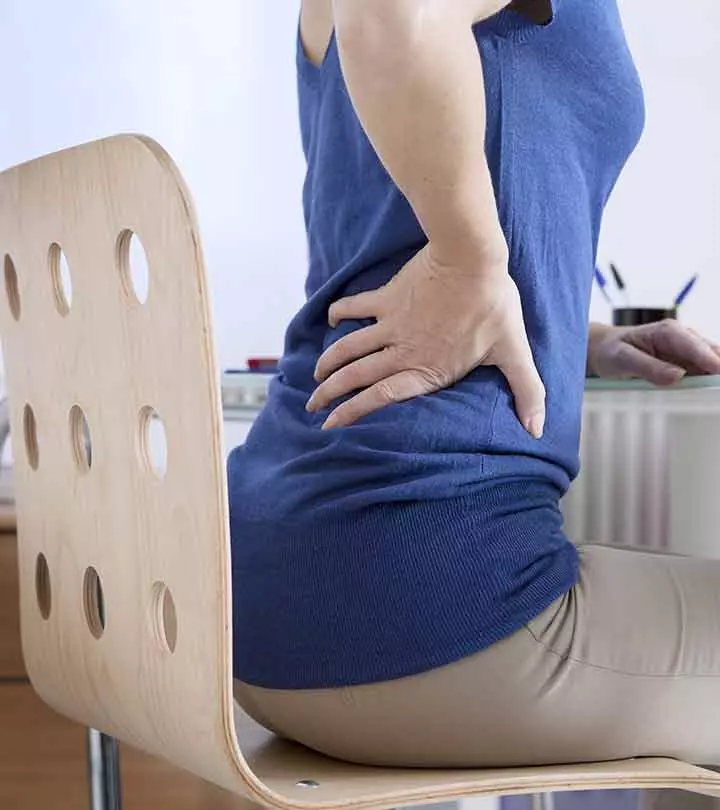







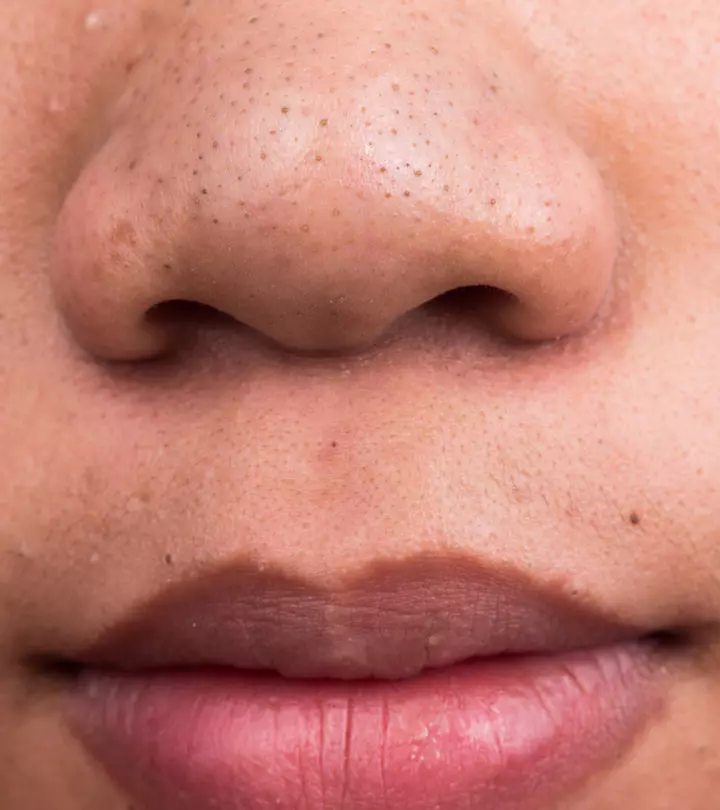








Community Experiences
Join the conversation and become a part of our empowering community! Share your stories, experiences, and insights to connect with other beauty, lifestyle, and health enthusiasts.